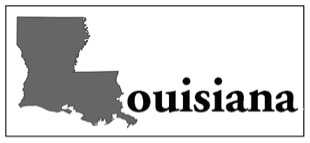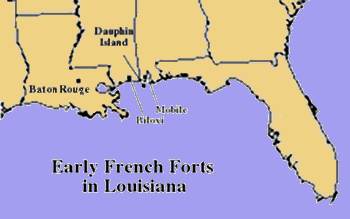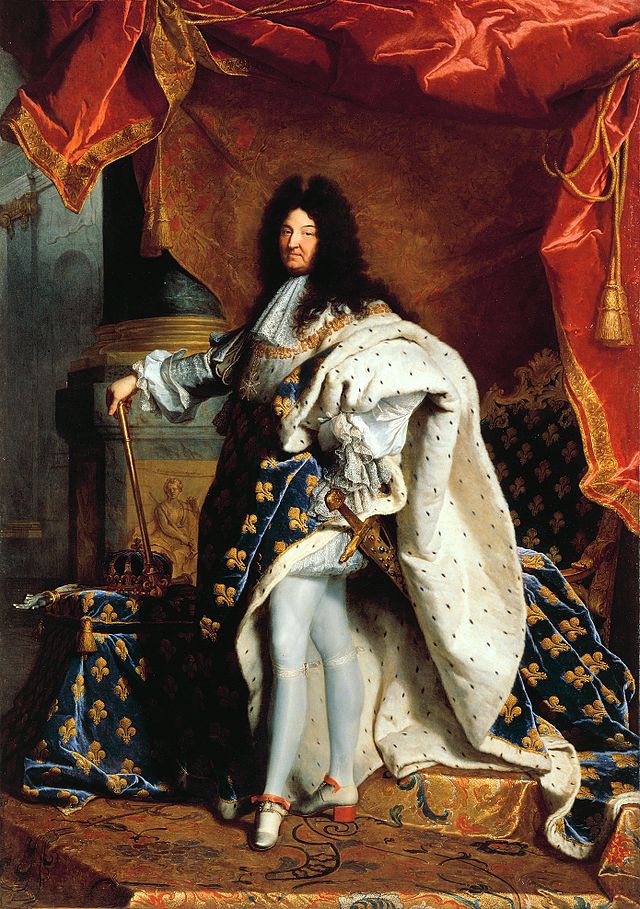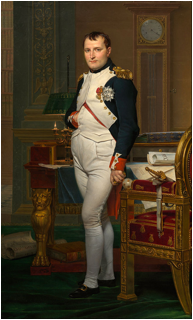LOUISIANA
Way down Louisiana down to New Orleans…
—Chuck Berry,
Johnny B. Goode
The city that gave us the first American music
The true inspiration and the freedom to use it
Where will we find it again if we lose it
—Jackson Browne,
Where were you
A Whole Different Country
What’s a bayou ? What exactly does Creole mean? And why do they call their counties “parishes”? Perhaps more than any other state, Louisiana sometimes seems like a whole different country. Louisiana denizens have their own holiday (Mardi Gras), their own food (Cajun), and their own way of speaking.
It is a small, unpretentious state, buried down south on the western edge of Dixie . But Louisiana’s image is different from other “southern” states—somehow less rebellious and a little more colorful. We think of genteel women like Bette Davis in Jezebel , or Vivian Leigh in A Streetcar Named Desire , or that 1970’s song New Orleans Ladies by LeRoux:
"New Orleans ladies,
a flair for life,
love and laughter"
We think of hot, steamy summers, sultry jazz music, corrupt politicians, and swampy marshlands with lots of mosquitoes. We also think of flavors—andouille, gumbo, crawfish, Tabasco® sauce, and anything with Cayenne pepper.
Geographically, too, Louisiana is unique among states. How nice it was of the founding fathers to mold Louisiana into the shape of an “L.” No other state has such an obvious mnemonic device to go along with its name. (Why couldn’t Vermont be shaped like a “V” or Missouri like an “M”?) But of course, like many states, Louisiana’s shape and size are quite different today than when the name was first applied.

Of course, since 2005 there is another word that comes to mind when we think of Louisiana, possibly even our first and most visceral image: Katrina. For many of us the images of masses of humanity, primarily people of color, desperately trying to survive both the hurricane and the botched federal response to it, will forever spring to mind at the mention of Louisiana. For a state that would previously have made us think of music, colorful parades, and fascinating history, it is, to put it woefully inadequately, a damn shame.
In the Name of King Louis XIV
In 1682 Rene-Robert Cavelier, Sieur de LaSalle navigated the Mississippi River to its source, and in so doing handed his king and his country the internationally recognized right to the entire river valley. The French, in the persons of Marquette and Jolliet (see Arkansas and Mississippi ), had penetrated the continent as far south as the Arkansas River nine years earlier, but for various reasons their journey is not seen historically as the one which gave France her claim to the North American interior. The most obvious reason, of course, is that they did not reach the Gulf of Mexico as La Salle did. Claiming the region for France was La Salle’s primary objective, so once he reached that point near the mouth of the Arkansas River where Marquette and Jolliet had turned back, he set up the French coat of arms, planted a cross, and declared the land the property of the French king, Louis XIV. (Louisiana is, of course, the state whose history forces us to remember our Roman numerals.) Then La Salle continued to the mouth of the Mississippi and repeated the ceremony, burying a brass plate which read, “In the name of Louis XIV, King of France and of Navarre, this ninth of April, 1682.”

Sieur de La Salle
Standing on the river banks of what is now New Orleans, La Salle proclaimed,
“On the part of the very-high, very-powerful, very-invincible and victorious Prince Louis the Great, by the grace of God King of France and Navarre, fourteenth of this name...”
and declared that he had
“...taken possession...of this country of Louisiana...”
It was this act of La Salle’s, and the reports and maps produced from it, that put the name Louisiana firmly in the lexicon of geographers, explorers, and missionaries, not to mention monarchs and prime ministers. While not every state can claim so specific an act—even a date, time, and person—responsible for its name, Louisiana can quite confidently claim La Salle’s act on the ninth of April in 1682 as the specific origin of its name.
The intrepid explorer went on to describe the extent of the region he was claiming. It included the Mississippi River, all of its tributaries, and a laundry list of items intended to describe what it was his king now owned:
“seas, harbors, ports, bays, adjacent straits and all its nations, peoples, provinces, cities, boroughs, villages, mines, ore-bearing earth, fishing waters, salt-water rivers, rivers...”1
Obviously La Salle wanted there to be no mistaking that King Louis XIV now owned everything .
Of course, in order to keep Louisiana, the French now had to defend it. They quickly (within a couple of decades) established forts at Biloxi, Mobile, Dauphin Island, and Baton Rouge. Finally, in 1718, a site was located closer to the mouth of the Mississippi River where a port city could be built. Jean Baptiste Le Moyne, Sieur de Bienville, established the city of New Orleans as the capital of Louisiana. It quickly became a thriving, multi-cultural trade center of critical importance to France, both politically and militarily.

Which King Louis?
Louisiana is the only state named for a French monarch. (Unless you count Queen Henrietta Maria, a French princess who became Queen of England. See Maryland .)
Referred to commonly as “The Sun King,” because he identified himself with the Greek god Apollo, Louis XIV reigned for 72 years, from 1643 (he assumed the throne at the age of four, when his father died of tuberculosis) until 1715, and he still holds the record in Europe for the longest reign of any monarch. His reign was marked by his belief in “absolute monarchy,” and when his Prime Minister, Cardinal Mazarin, died in 1661, Louis decided not to replace him but to rule alone. He built the fabulous palace at Versailles and imbued the French court with the lavish excesses that would, less than a hundred years after his death, mark the downfall of the monarchy and help to provoke the French Revolution.

Louis was married to Queen Maria Theresa of Spain, and they had seven children, only one of whom lived to adulthood. Louis also had numerous mistresses, and several bastard children resulted from these extramarital escapades. One of his (legitimate) grandsons went on to become King Philip V of Spain, a throne which Louis fought to maintain for him in the Wars of the Spanish Succession. One of these, Queen Anne’s War, was fought in North America and was responsible for the loss of much of what is now Canada to England.
Louis XIV was succeeded by his great-grandson, Louis the XV, who also enjoyed a long reign, but was destined to preside over the loss of the eastern half of Louisiana to England after the Seven Years (French and Indian) War. He died in 1774, relinquishing the throne to Louis XVI, whose reign would be considerably shorter. He and his wife, Marie Antoinette, were beheaded in 1793 during the Reign of Terror that marked the French Revolution. Six years later Napoleon Bonaparte instigated a coup d’état and took control of the new Republic of France, paving the way for France’s loss of the western half of Louisiana.

The Deal
In discussions of American history, it is difficult to utter the word “Louisiana” without following it by the word “Purchase.” In the timeline of events in our nation’s history, the Louisiana Purchase is monumental, allowing as it did the size of the United States to double without the “hassle” of a war. Of course, there were wars—they just weren’t with the French, whose grip on the land was growing more and more tenuous anyway. These wars were fought with the Indians—the people who occupied the land and who had the most legitimate claim to it.

Actually by the time of the Louisiana Purchase, the United States already laid claim to half of the region that had initially been acquired by La Salle. All of the region east of the Mississippi and west of the Appalachians had been won from France by England in 1763 with the Treaty of Paris that ended the Seven Years War, and then from England by the U.S. after the American Revolution only twenty years later. It was the rest of Louisiana, the region between the Mississippi and the Rocky Mountains (excluding Texas, which was a province of New Spain and extended northward as far as Colorado), that changed hands as a result of the machinations surrounding what some call the greatest real estate deal in history.
Volumes, of course, have been written about the Louisiana Purchase, but briefly... France had given the region to Spain in 1762 as thanks for that country’s alliance in the war with England and as a way of keeping England from claiming it as conquered territory. In 1800, Napoleon coerced Spain into giving it back to France with the secret Treaty of Ildefonso . Napoleon had hoped to regain a glorious French empire in North America but, due mainly to massive military setbacks incurred during the Haitian revolution, was unable to send his troops to New Orleans. Eventually he turned his attention to war with England and needed money to finance it. Thus, in 1803 he sold Louisiana to the United States for fifteen million dollars with the intention, many historians assert, of winning it back by force once he was finished with England. Of course, that didn’t happen. Instead, France was defeated by the English/Russian alliance at the Battle of Waterloo, and the U.S. went on to consolidate its grip on the North American continent.
Orleans Becomes Louisiana
Thomas Jefferson’s now famous idea was to reserve Louisiana for the Indians—those who already lived there, as well as those who were being displaced in the east. Residents of St. Louis (named, by the way, for a different king of France, King Louis IX, who was actually a canonized saint), were outraged at such a notion. That city was the “gateway to the west” through which streams of people were already flowing on their way to try to make a living in the new vast region. Popular dissent won out, and Jefferson’s plans for the purchased land quickly began to be reformulated.
In 1804, the Louisiana Purchase was divided. All of the area north of the current northern border of Louisiana was fashioned into the District of Louisiana ; the Territory of Orleans was formed from the remainder. Orleans was comprised of land that is currently the state of Louisiana, excluding what became known as the “Florida Parishes,” which was the land north of the Mississippi River, but west of the Pearl River—land that Spain still claimed as part of Florida. The following year the District of Louisiana became the Territory of Louisiana , in preparation for division into new states.

In 1810 the Florida Parishes, along with the rest of West Florida (roughly the current panhandle of Florida, extended west to the Mississippi River), revolted against the Spanish government. The region was settled mostly by Anglo Americans who had, for years, been disappointed that the United States was not more proactive in annexing the region. The Kemper Rebellion, named for three brothers who instigated the revolt, culminated with the raising of a blue flag with a white, five-pointed star in the middle, and declaring the area the Republic of West Florida . This “Bonnie-Blue Flag” still flies today over many public buildings in southern Louisiana.
A month after the Kemper Rebellion, the U.S. finally claimed the Florida Parishes as part of Louisiana. Spain did not recognize the claim of the United States but had her hands full with the Mexican Revolution, and so was ill equipped to fight the encroachment.
On April 30, 1812, President James Madison admitted Louisiana to the union as the 18th state, but not until a few weeks later, on June 4th, was Missouri Territory created out of what had been Louisiana Territory. For just over a month, both a Territory of Louisiana and a State of Louisiana existed.
And two weeks after that, on June 15, America declared war with Great Britain. The War of 1812 was fought primarily over maritime policies and remained a virtual stalemate for about eighteen months. Weary of the costly war, both countries signed the Treaty of Ghent in the Netherlands on Christmas Eve, 1814. Two weeks later, on January 8, 1815, the most famous battle of the war was fought in New Orleans, Andrew Jackson and his army soundly defeating the invading British, neither side having received word of the peace treaty.
Not until 1819, and the signing of the Adams-Onis Treaty between the U.S. and Spain, would the Florida Parishes be secure in their attachment to Louisiana, making the perfect “L” shape a consistent fixture on U.S. maps.
End Notes
1. Johnson, Donald S., La Salle: A Perilous Odyssey from Canada to the Gulf of Mexico (Cooper Square Press, 2002), p. 112.